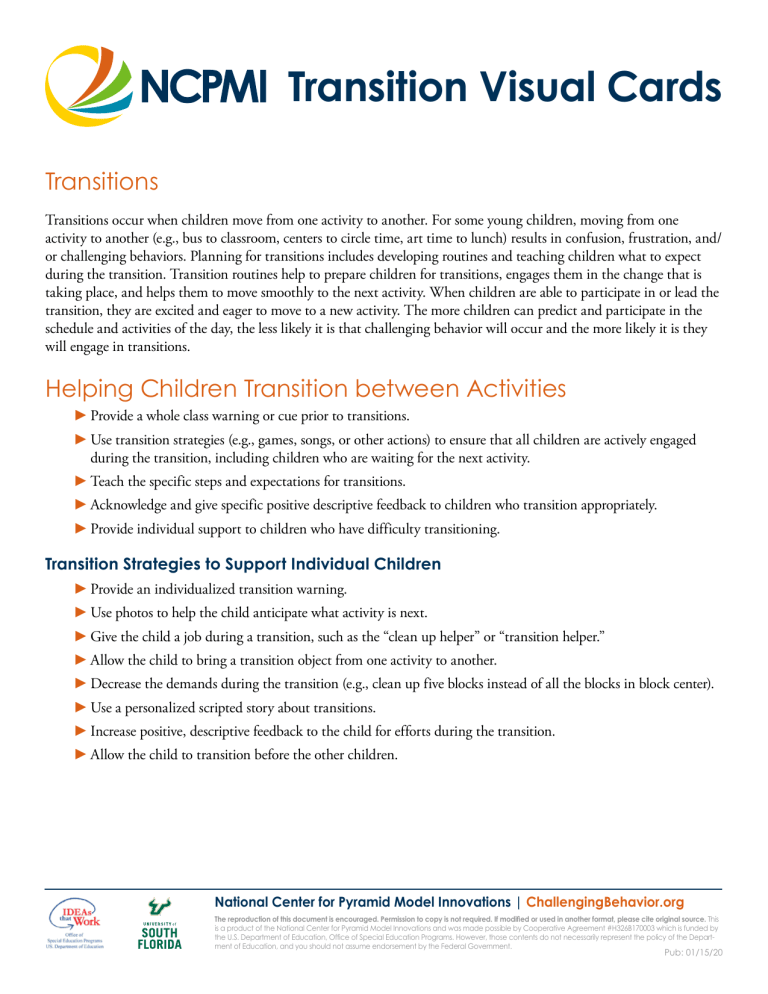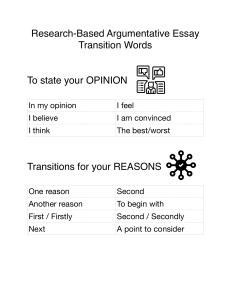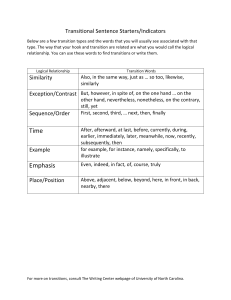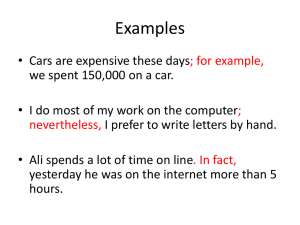
Transition Visual Cards Transitions Transitions occur when children move from one activity to another. For some young children, moving from one activity to another (e.g., bus to classroom, centers to circle time, art time to lunch) results in confusion, frustration, and/ or challenging behaviors. Planning for transitions includes developing routines and teaching children what to expect during the transition. Transition routines help to prepare children for transitions, engages them in the change that is taking place, and helps them to move smoothly to the next activity. When children are able to participate in or lead the transition, they are excited and eager to move to a new activity. The more children can predict and participate in the schedule and activities of the day, the less likely it is that challenging behavior will occur and the more likely it is they will engage in transitions. Helping Children Transition between Activities ► Provide a whole class warning or cue prior to transitions. ► Use transition strategies (e.g., games, songs, or other actions) to ensure that all children are actively engaged during the transition, including children who are waiting for the next activity. ► Teach the specific steps and expectations for transitions. ► Acknowledge and give specific positive descriptive feedback to children who transition appropriately. ► Provide individual support to children who have difficulty transitioning. Transition Strategies to Support Individual Children ► Provide an individualized transition warning. ► Use photos to help the child anticipate what activity is next. ► Give the child a job during a transition, such as the “clean up helper” or “transition helper.” ► Allow the child to bring a transition object from one activity to another. ► Decrease the demands during the transition (e.g., clean up five blocks instead of all the blocks in block center). ► Use a personalized scripted story about transitions. ► Increase positive, descriptive feedback to the child for efforts during the transition. ► Allow the child to transition before the other children. National Center for Pyramid Model Innovations | ChallengingBehavior.org The reproduction of this document is encouraged. Permission to copy is not required. If modified or used in another format, please cite original source. This is a product of the National Center for Pyramid Model Innovations and was made possible by Cooperative Agreement #H326B170003 which is funded by the U.S. Department of Education, Office of Special Education Programs. However, those contents do not necessarily represent the policy of the Department of Education, and you should not assume endorsement by the Federal Government. Pub: 01/15/20 Transitions Visual Cards line up sit on carpet wash hands sit at table brush teeth go to bathroom clean up pick a book lie down



